Autumn types of rows
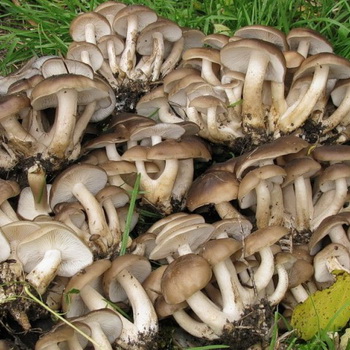
September rows are usually located among mixed forests dominated by spruce. Outwardly, they are pleasing to the eye, dense, stately, with a good shape. There are many lovers of these spicy mushrooms with a peculiar specific aroma.
In October, smelly rows are often found. They grow very widely near paths and forest glades. In October, it is imperative to sniff all the mushrooms. As a result, you will quickly identify these dangerous mushrooms that smell like chemistry. Then you distinguish them from similar edible pigeon rows that don't smell anything.
In October, you can still meet the beautiful edible red-yellow rows. If the frosts have not passed, then they are bright and attractive. After frosts, the color of the hat dims.
Before heading into the forest, find out how row mushrooms look and where they grow.
Edible Varieties of Rows
Ordinary gray (Tricholoma portentosum).
The habitats of this variety of autumn mushrooms are: mixed and coniferous forests grow in groups.
Season: September - November.
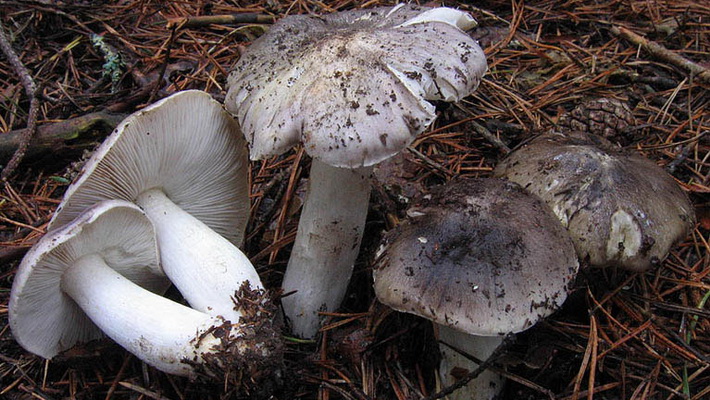
The hat is 5-12 cm in diameter, sometimes up to 16 cm, at first convex-bell-shaped, later convexly spread. A distinctive feature of the species is a light gray or light cream surface with a darker grayish-brown center, sometimes with a purple or olive tint; the surface is radially fibrous with darker radial fibers in the middle. In the center of the mushroom's hat, a gray row is often a flat tubercle. In young specimens, the surface is smooth and sticky.
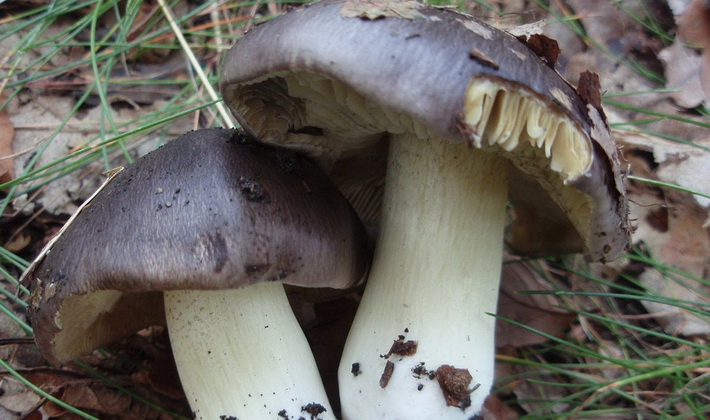
Leg 5-12 cm tall, 1-2.5 cm thick, grayish-yellowish, in the upper part covered with powdery coating. Leg short, thickened at the base.
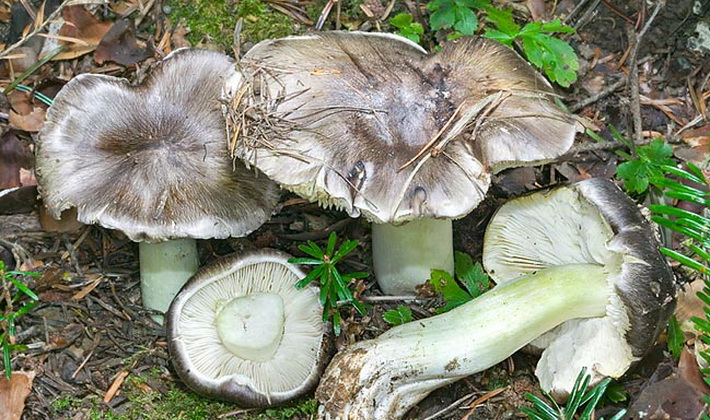
The pulp is whitish and dense with a powdery taste and smell, first solid, later grooved. The flesh is gray under the skin of the hat. In old mushrooms, the smell can be pungent.
The plates are whitish, cream or grayish-yellow, straight and attached with a tooth to the leg or free. The edge of the cap and plate as they age can become covered with yellowish spots.
Variability: the fungus is highly variable in color depending on the stage of development, time and humidity of the season.
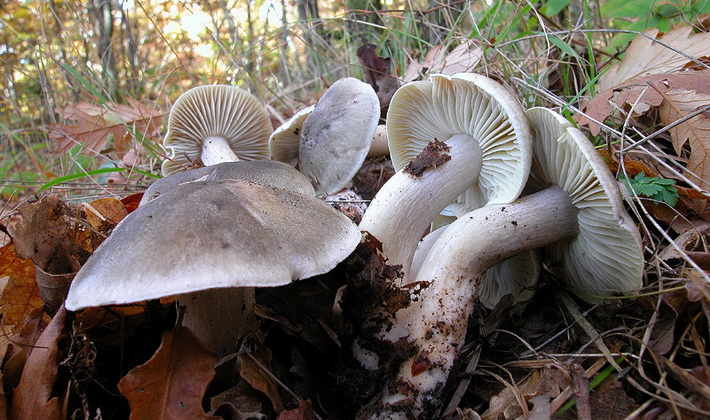
Similar views: according to the description, the mushroom gray can be confused with the soap row (Tricholoma saponaceum), which is similar in shape and color at a young age, but differs in the presence of a strong soap smell in the pulp.
Habitats: mixed and coniferous forests grow in groups.
Edible, 4th category.
Cooking Methods: frying, cooking, salting. Given the pungent odor, it is not recommended to pick the most mature mushrooms, in addition, to soften the pungent odor, it is recommended to cook in 2 waters.
These photos clearly illustrate the description of the gray rowing:
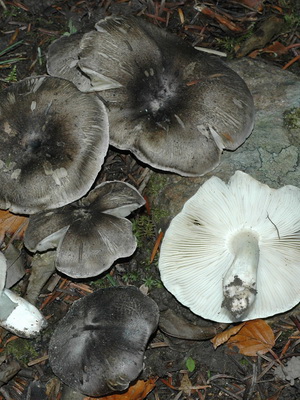
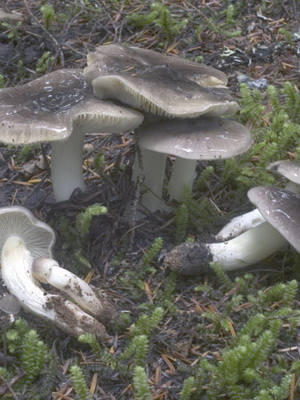
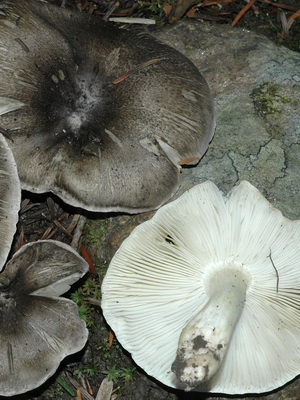
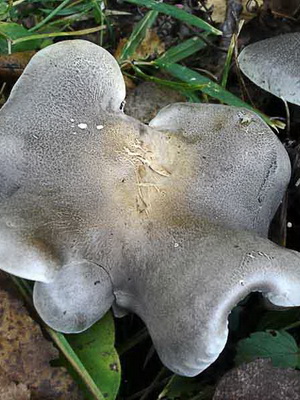
The crowded row (Lyophyllum decastes).
Habitats: forests, parks and gardens, lawns, near stumps and on humus-rich soil, grow in large groups.
Edible mushroom picking season July - October.
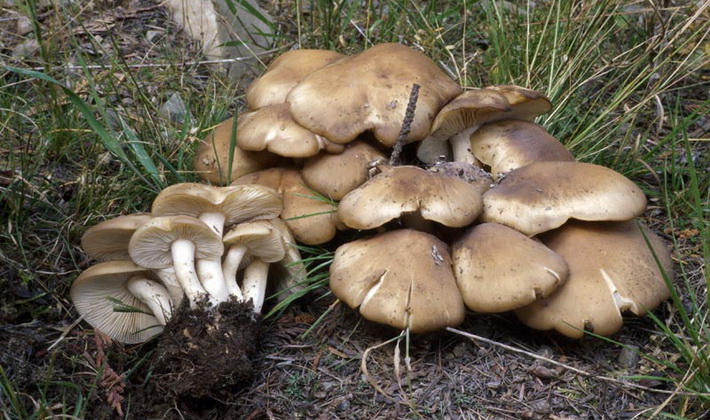
The cap is 4-10 cm in diameter, sometimes up to 14 cm, first hemispherical, later convex. The first distinctive feature of the species is the fact that the mushrooms grow in a dense group with fused bases in such a way that it is difficult to separate them. The second distinctive feature of the species is the hilly, uneven surface of the cap is brownish or gray-brown in color with the wavy edges down.
As you can see in the photo, in this row in the center, the color of the hat is more saturated or dark than on the periphery:
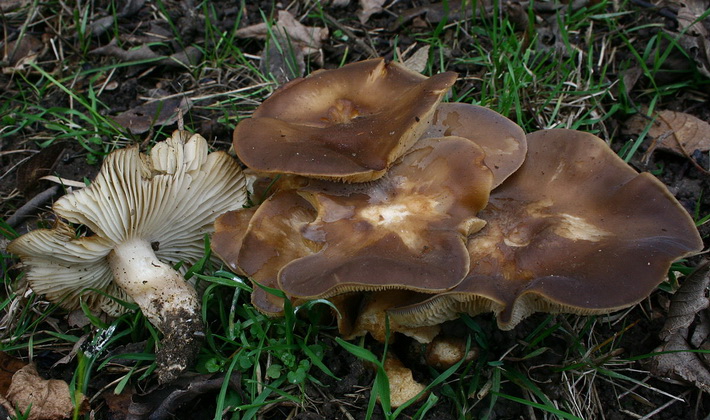
In the center there is often a small wide tubercle.
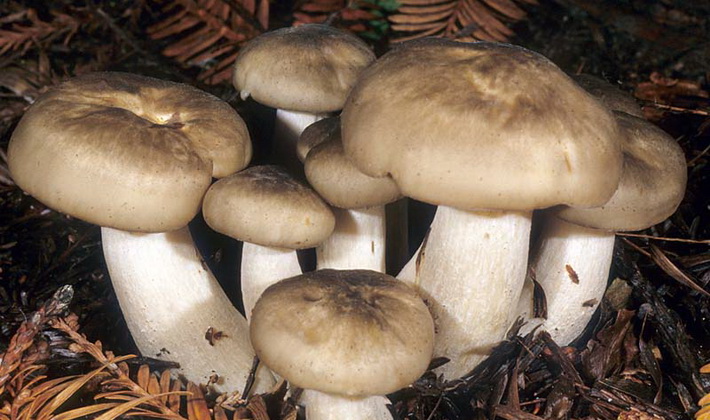
Leg 4-10 cm tall, 6-20 mm thick, dense, completely white above, below gray-white or grayish-brown, it is flattened and bent.

The pulp is white, thickened in the center of the cap, the taste and smell are pleasant.
The plates are grown, frequent, white or dirty white, narrow.
Variability: the fungus is highly variable in color depending on the stage of development, time and humidity of the season.
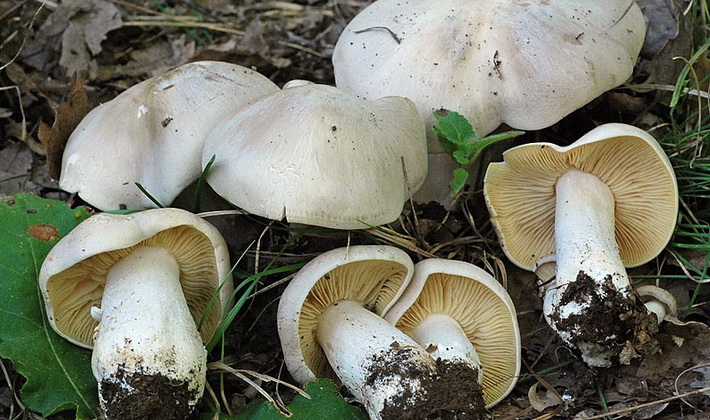
Poisonous similar species. The crowded row looks almost poisonous yellowish-gray entoloma (Entoloma lividum), which also has wavy edges and a similar taupe hat. The main difference is the smell of flour in the entoloma pulp and a separate, not crowded, growth.
Edible, 4th category.
Cooking Methods: salting, frying and pickling.
Look at the photos that illustrate the description of edible rows:
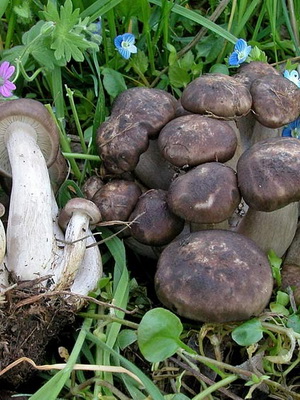
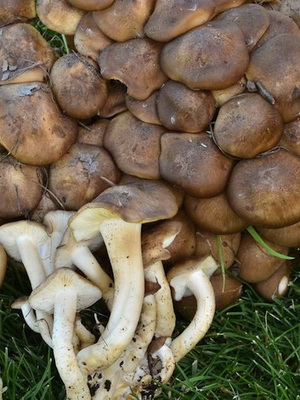
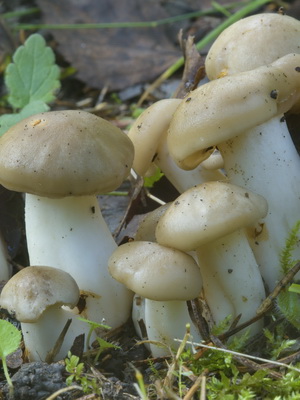
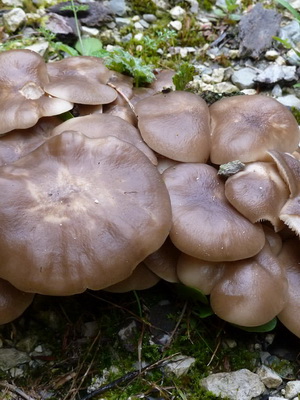
Rowan pigeon (Tricholoma columbetta).
Habitats: deciduous and mixed forests, in wet areas, grow in groups or singly.
Season: July - October.
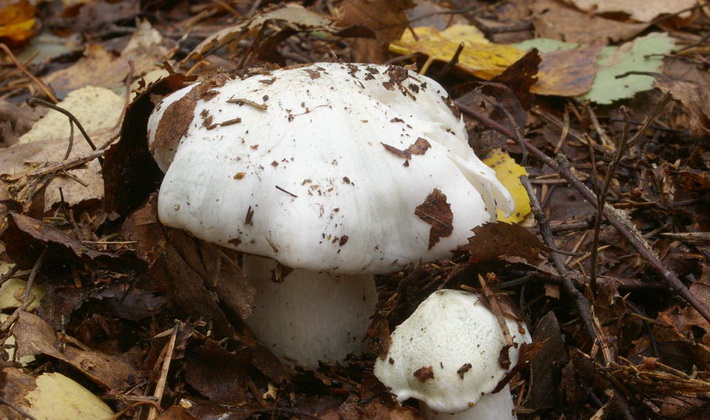
The hat is 3-10 cm in diameter, sometimes up to 15 cm, dry, smooth, first hemispherical, later convex-spread. A distinctive feature of the species is the tuberous and highly wavy surface of the ivory hat or white-cream. On the central part there are yellowish spots.
Look at the photo - the mushroom has a rowing, the pigeon surface of the hat is radially fibrous:
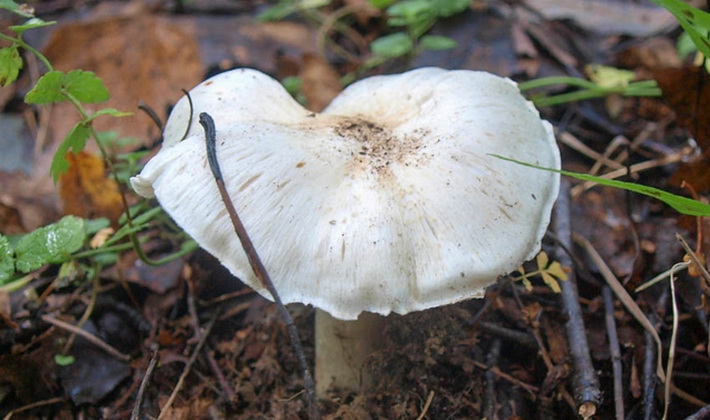
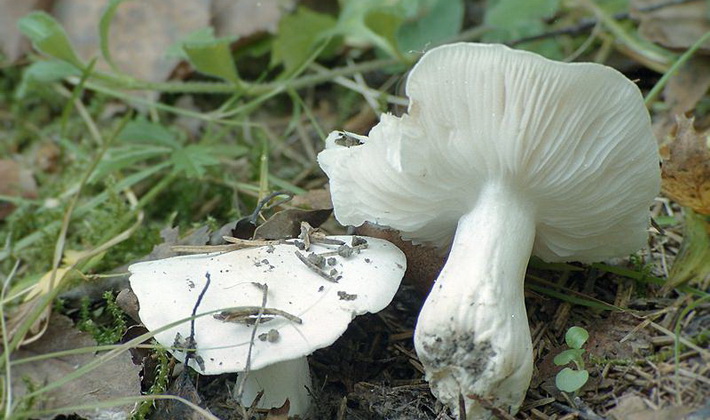
Leg 5-12 cm tall, 8-25 mm thick, cylindrical, dense, elastic, has a slight narrowing at the base. The pulp is white, dense, fleshy, later pinkish with a powdery smell and pleasant mushroom taste, it turns pink at the break.

The plates are frequent, first attached to the leg, later free.
Similarity to other species. According to the description, an edible row of pigeons at an early stage of growth is similar to a gray row (Tricholoma portentosum), which is edible and has another pleasant smell. As it grows, the difference increases due to the grayish color of the hat in the gray row.
Edible, 4th category, they can be fried and cooked.
Ordinary yellow-red (Tricholomopsis rutilans).
Habitats: mixed and coniferous forests, often on pine and rotten spruce stumps or fallen trees, usually grow in large groups.
Season: July - September.
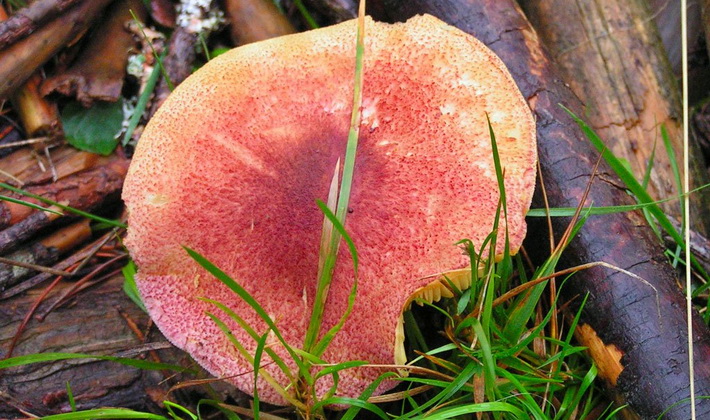
The hat has a diameter of 5 to 12 cm, sometimes up to 15 cm, in the youngest specimens it looks like a sharp cap, has a bell-shaped shape, then it becomes convex with the edges bent down and a small dull tubercle in the center, and in mature specimens - open. with a slightly indented middle. A distinctive feature of the species is the red-cherry uniform color of the hat in the youngest specimens, then it becomes yellow-red with a darker shade in the blunt tubercle, and in maturity with a slightly indented middle.
Look at the photo - this edible rowing has a dry, yellow-orange skin with small fibrous reddish scales:
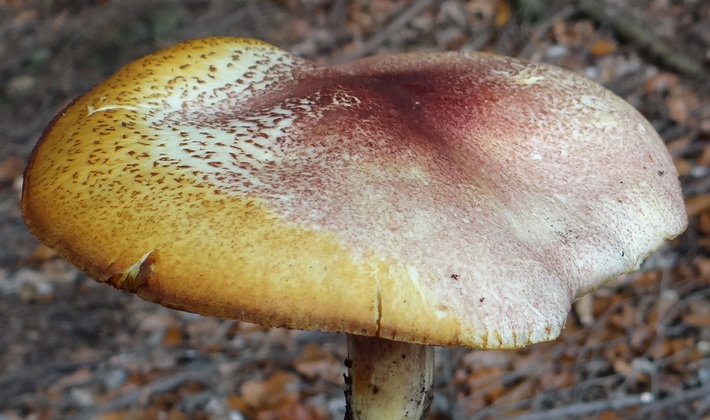
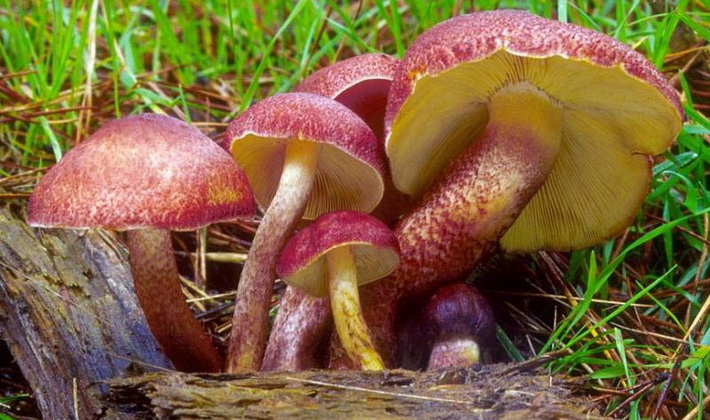
Leg 4-10 cm tall and 0.7-2 cm thick, cylindrical, may be slightly thickened at the base, yellowish, with reddish flaky scales, often hollow. The coloration is the same color with a hat or a little lighter, in the middle part of the leg the coloration is more intense.
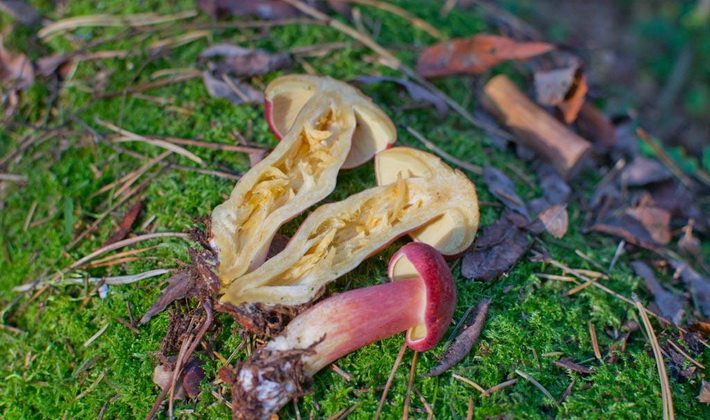
The pulp is yellow, thick, fibrous, dense with a sweet taste and sour smell. The spores are light cream.
The plates are golden yellow, egg yellow, twisty, grown, thin.
Similarity to other species. The yellow-red rowing is easily recognized thanks to the elegant coloring and beautiful appearance.The species is rare and in some areas is listed in the Red Book, status - 3R.
Cooking Methods: pickling, pickling.
Edible, 4th category.
These photos show row mushrooms, the description of which is given above:
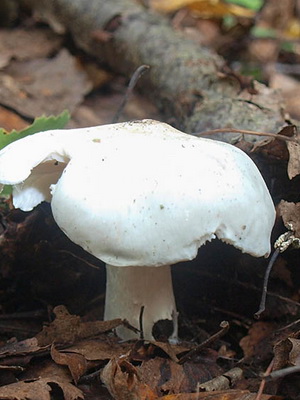
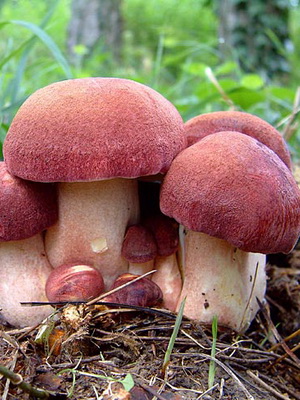
The following are photos and descriptions of the inedible varieties of rows.
Inedible Varieties of Rows
Pseudowhite (Tricholoma pseudoalbum)
Habitats: deciduous and mixed forests are found in small groups and singly.
Season: August - October.
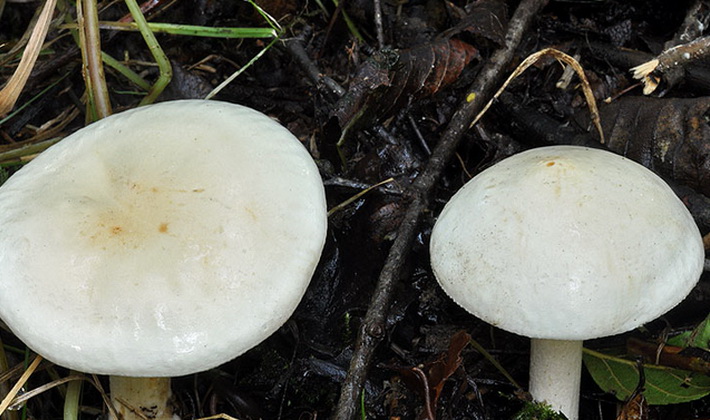
The hat has a diameter of 3 to 8 cm, first hemispherical, later convex. A distinctive feature of the species is a white, white-cream, white-pinkish hat.
As shown in the photo, this inedible rowing has a leg 3-9 cm tall, 7-15 mm thick, first white, later white-cream or white-pink:
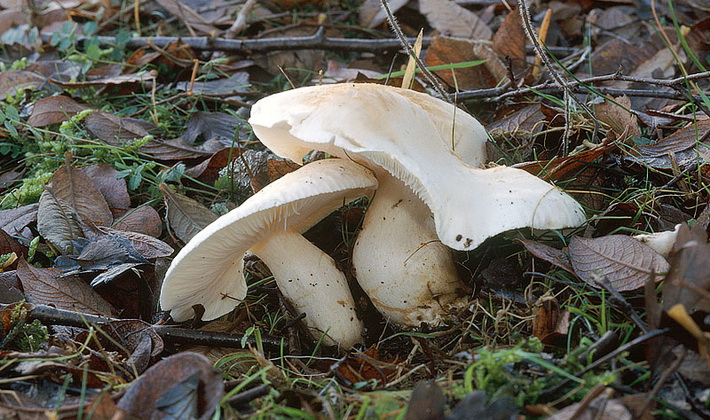
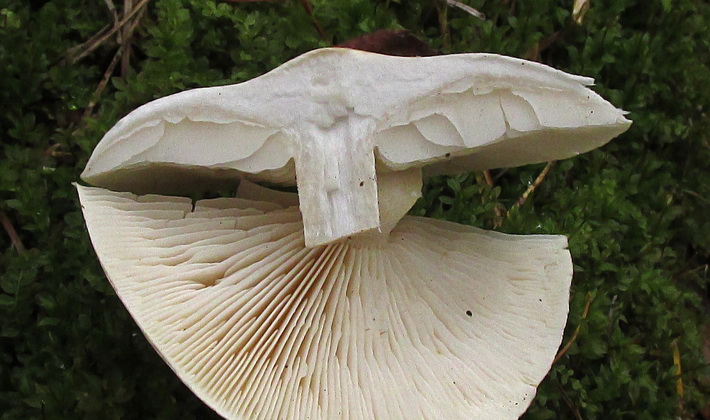
The flesh is whitish, later slightly yellowish with a powdery odor.
The plates are first grown, later almost free, cream-colored.
Variability: the color of the hat varies from white to white-cream, white-pink and ivory.
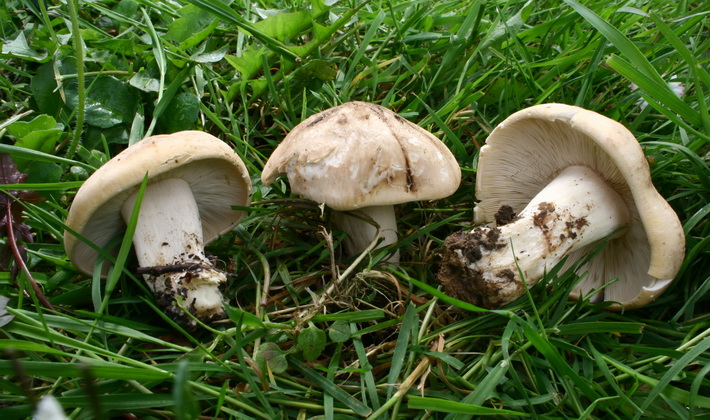
Similarity to other species. The row is pseudo-white in shape and size similar to May row (Tricholoma gambosa), which is distinguished by the presence of delicate pinkish and greenish areas on the hat.
Inedible due to unpleasant taste.
Smelly rowfish (Tricholoma inamoenum).
Where the smelly rowing grows: deciduous and mixed forests, in wet areas, grow in groups or singly.
Season: June - October.

The cap is 3-8 cm in diameter, sometimes up to 15 cm, dry, smooth, first hemispherical, later convexly spread. The edges become slightly wavy with age. The color of the hat is first whitish or ivory, and with age with brownish or yellowish spots. The surface of the cap is often bumpy. The edge of the cap is bent down.
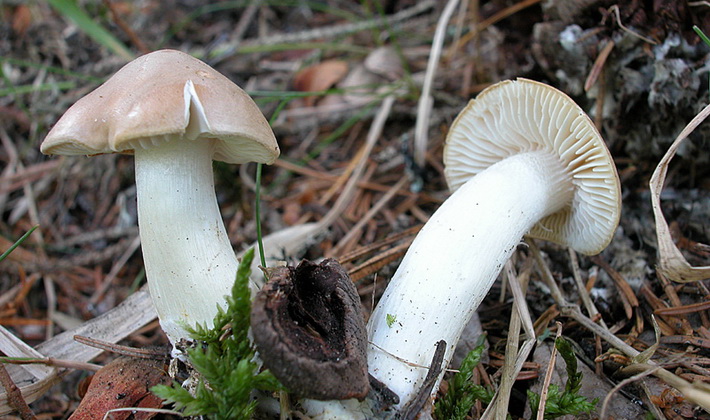
The leg is long, 5-15 cm high, 8-20 mm thick, cylindrical, dense, elastic, has the same color as the hat.
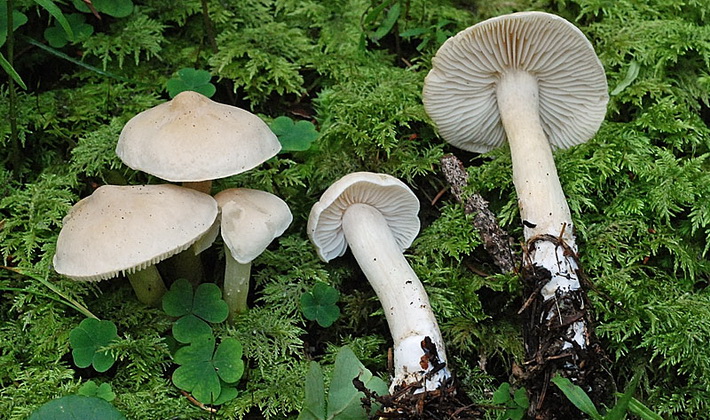
The pulp is white, dense, fleshy. A distinctive feature of the species is the smelly strongest smell in both young mushrooms and old ones. This smell is the same as that of DDT or light gas.
Medium-frequency plates, grown, whitish or cream in color.
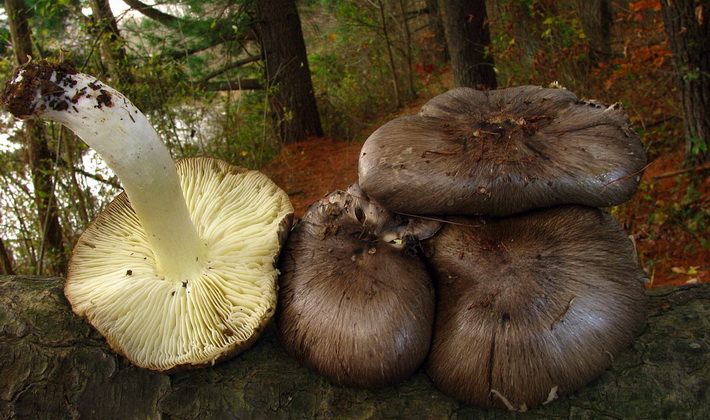
Similarity to other species. Smelly rowfish at an early stage of growth is similar to gray row (Tricholoma portentosum), which is edible and has a different smell, not pungent, but pleasant. As it grows, the difference increases due to the grayish color of the hat in the gray row.
Inedible due to a strong unpleasant smelly smell, which cannot be eliminated even with long boiling.
In this collection you can see photos of edible and inedible rows:
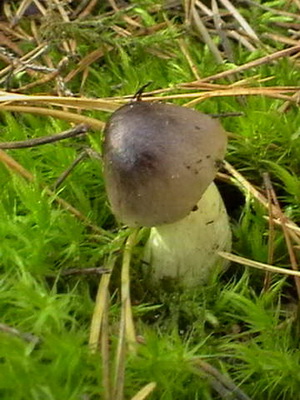
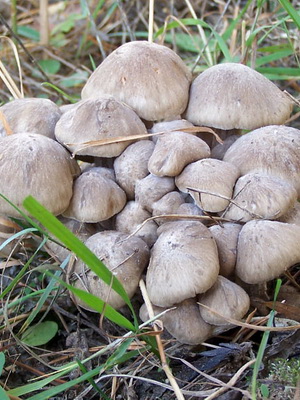
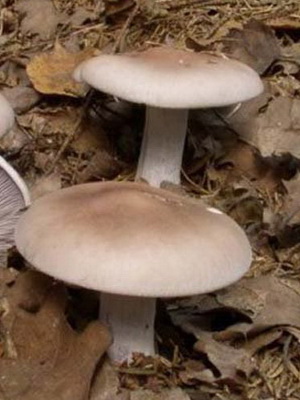
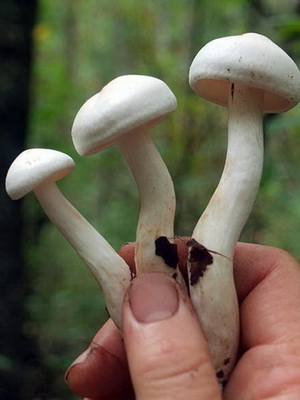
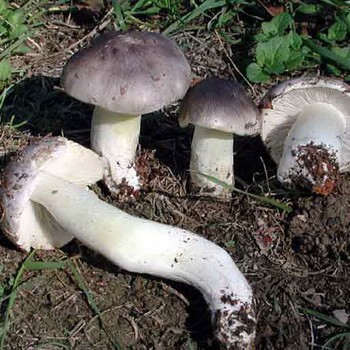
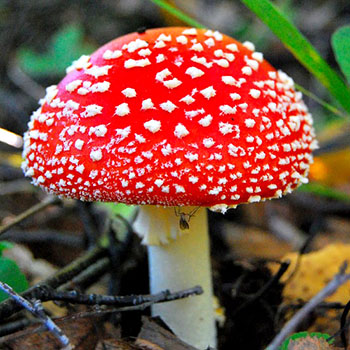

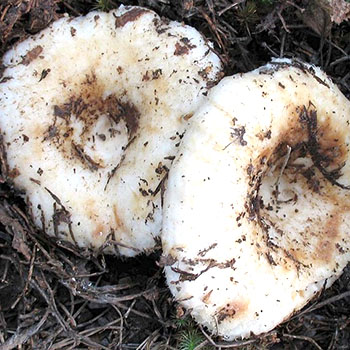
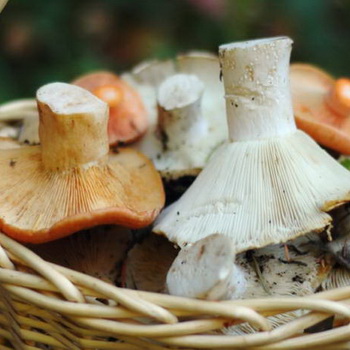
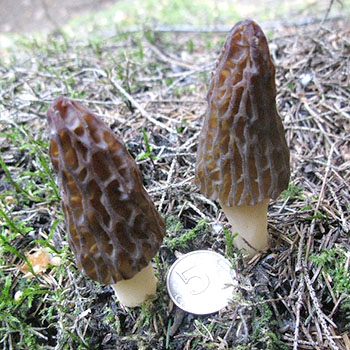
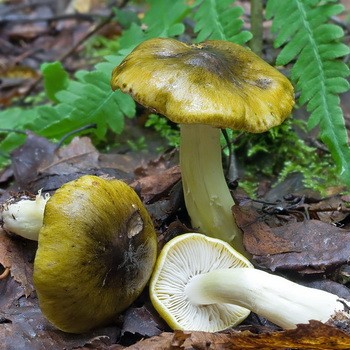
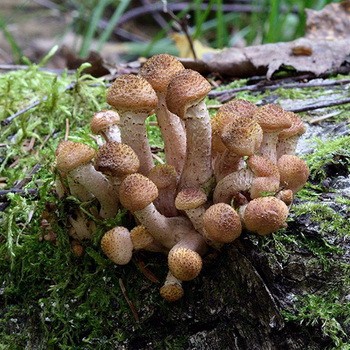
Here in the pictures sometimes you won’t understand how inedible. But in reality, when you look with your own eyes, or pick up, you immediately understand ... But this is a matter of experience.